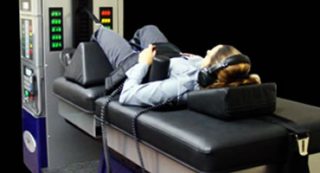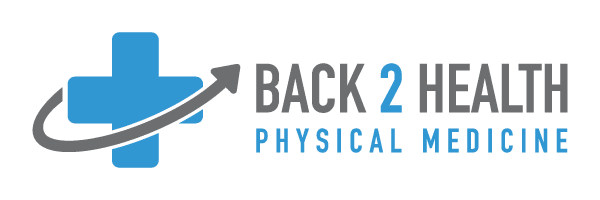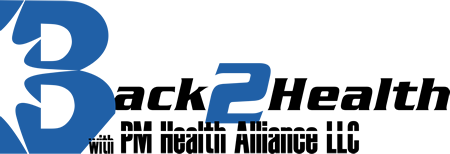 This FDA approved technology relieves pain by enlarging the space between the discs. The negative pressure of decompression releases pressure that builds on to the disc and nerves, allowing the herniated and bulging disc to eventually go back into normal position. Decompression is the only treatment that is truly most effective for severe cases of herniation, degeneration, arthritis, stenosis and pressure on nerve root.According to a clinical study performed by Orthopedic Technological Review in 2004, said that 86% of all cases experienced spinal pain relief.
This FDA approved technology relieves pain by enlarging the space between the discs. The negative pressure of decompression releases pressure that builds on to the disc and nerves, allowing the herniated and bulging disc to eventually go back into normal position. Decompression is the only treatment that is truly most effective for severe cases of herniation, degeneration, arthritis, stenosis and pressure on nerve root.According to a clinical study performed by Orthopedic Technological Review in 2004, said that 86% of all cases experienced spinal pain relief.
What Result Should I Expect?
Many patients with lower back syndromes may experience pain relief as early as the third treatment session. Comparison of pre-treatment MRIs with post-treatment MRIs has shown a 50% reduction in the size and extent of herniation. In clinical studies, 86% of patients reported relief of back pain with the our system. Within the past five years, some private practice clinicians have reported success rates as high as 90%.
What Time Commitments Are Required By Patients?
Each treatment session averages 25 to 30 minutes in duration. On average, one daily session for 20-30 treatments is necessary for patient self-healing to occur.
Herniated discs generally respond within 20 sessions, while patients with degenerated discs may need ongoing therapy at regulated intervals to remain pain free. Still other patients, due to lifestyle or occupation, may also require maintenance therapy. Patients with posterior facet syndromes may achieve complete remission with 10 or fewer sessions. Research has demonstrated that most patients achieve full remission from pain after the initial treatment regimen.
Who can benefit from using Disc Decompression Therapy?
The following would be inclusion criteria for the Decompression Therapy
- Pain due to herniated and bulging lumbar discs that is more than four weeks old;
- Recurrent pain from a failed back surgery that is more than six months old;
- Persistent pain from degenerated discs not responding to four weeks of therapy;
- Patients available for four weeks of treatment protocol; and
- Patient at least 18 years of age.
These indications are ideal candidates for enrollment into our program and have the potential of achieving quality outcomes in the treatment of their back pain:
- Nerve Compression
- Lumbar Disorders
- Lumbar Strains
- Sciatic Neuralgia
- Herniated Discs
- Injury of the Lumbar Nerve Root
- Degenerative Discs
- Spinal Arthritis
- Low Back Pain w/ or w/o Sciatica
- Degenerative Joint Disease
- Myofasctois Syndrome
- Disuse Atrophy
- Lumbar Instability
- Acute Low Back Pain; and
- Post-Surgical Low Back Pain.
Lastly, the system should be utilized with patients with low back pain, with or without radiculopathy who have failed conventional therapy (physiotherapy and chiropractic) and who are considering surgery. Surgery should only be considered following a reasonable trial of Decompression therapy protocols.
How long before a patient experiences change?
Often times a patient experiences some relief within the first few (3-7) treatments. Usually by the 12th to 15th treatment all patients have reported some remission of symptoms. Patients not showing significant improvement by the 15th to 18th session may be referred for further diagnostic evaluation.
Does Decompression Therapy work for everyone?
Eighty-to-ninety percent of patients who have been properly selected and comply with the Spinal Disc Decompression protocol will have good-to-excellent outcomes. Patient’s conditions that do not respond quickly to the therapy are often unable to be helped by anything quickly. Patients vary in age, sex and body morphology and may require counseling in weight loss, nutrition and other lifestyle changes.
ULTRASOUND
One of the most common and effective therapeutic modalities is ultrasound. Ultrasound is one of the deepest forms of heat, with penetration (1-5 centimeters) to where the muscles meet the bones. A wide range of injuries can be treated with ultrasound, from simple sprain strains, to narrow tendon tears. By creating permanent, physical changes, ultrasound works to increase blood flow, repair soft tissue damage and decrease scar tissue formation.
ELECTRICAL STIMULATION
We utilize electrical muscle stimulation (EMS) on a regular basis as part of a patient’s treatment in our clinic. EMS works by sending safe, gentle electrical impulses to muscles. By causing the muscle to expand and contract, signals can be simulated as though the brain is producing them. These signals in turn, force the brain to produce natural endorphins and enkephalins and cause immediate pain relief. We recommend the use of this type of modality to aid in the rehabilitation of muscles following injury and to ease chronic muscle spasms and pain. By increasing blood flow to and from muscles, the stimulation acts as a pump, helping to remove lactic acid, a common waste product found in overused or damaged muscles. This type of stimulation also serves to increase blood flow to and from the muscles, reducing edema (inflammation) and promoting quicker recovery.


